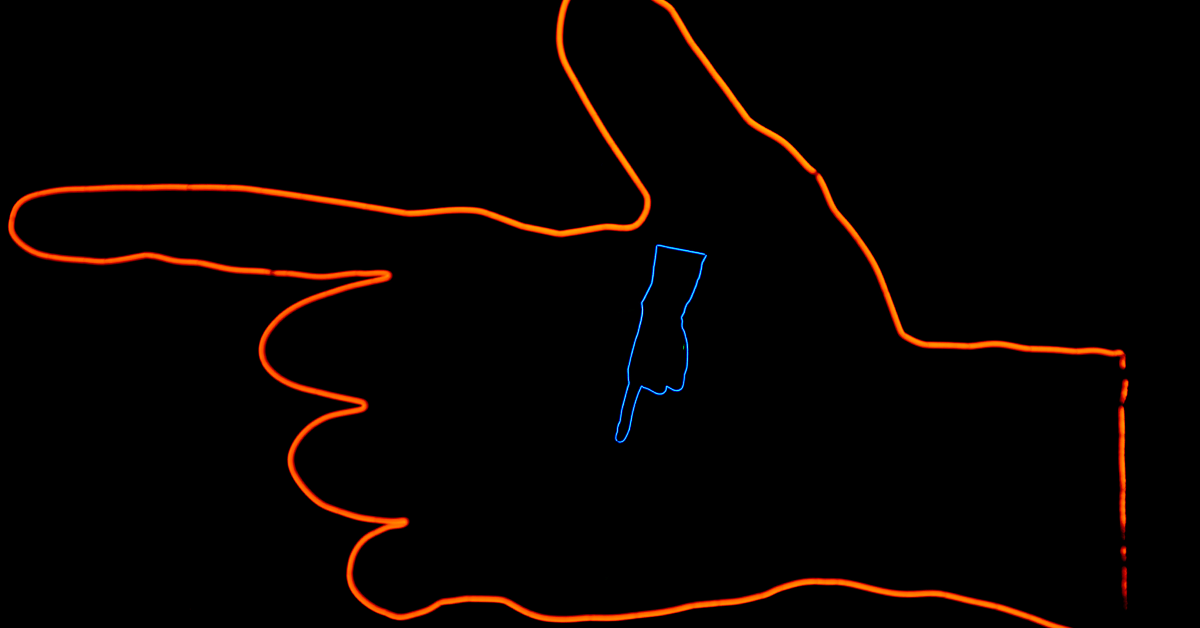A mental model is an idea someone has about how the world works.
When we understand user mental models we can make informed design decisions that align with their expectations.
In this article, I give an example of the exact process I use to identify mental models and share some examples to help cement the idea in your mind.
What Is a Mental Model in UX Design?
A mental model is a person’s idea about the world works.
They’re like scaled-down models of how the world works that we carry around in our heads.
These models are used to anticipate events, reason, and form explanations.
A mental model is a person’s idea about how the world works, which they use to anticipate events, reason, and form explanations.
For example: When a user sees a shopping cart online, they intuitively understand that they can fill it with items that they want to purchase. Because they’ve used shopping carts in the real world, they might also expect that you should be able to add and remove things from the cart and, at some point, reach a checkout.
If the UX Designer has correctly identified which models a user has in their mind about how something should work. They can create designs that align with these ideas.
Understanding a user’s mental models is what allows us to design functionality that meets user expectations and deliver intuitive designs.
Examples of Good Mental Models in UX Design
We all have 1000s of mental models about how the world works. It’s how our mind processes, stores, and interprets information. They’re like shortcuts to remembering things.
In UX Design, we often align with mental models by using metaphors that the user will understand.
Many of them are so subtle and insignificant that we take them for granted. Like the idea that a folder should contain files. Or a back arrow should take you back.
Others are more complex. Like the law of diminishing returns. The idea is that as you invest more in a particular area, the rate of profit gained from each additional investment decreases. This means that, eventually, investing more in that area will not result in any additional profit.
Below I’ve listed a few more examples just to cement the idea in your mind. After this, we’ll dig into how to research mental models and how to create UX mental model diagrams for your own projects.
- Zooming: Zooming in or out will bring the content closer or further away.
- Search: Typing keywords into a search bar will help us find what we’re looking for.
- Breadcrumb: A breadcrumb shows us a trail of where we’ve been.
- Tabs: A tab should allow us to jump between sections in a file.
- Accordions: Accordions should expand and collapse.
- Menus: A menu provides options for me to choose from.
Mental models and metaphors are both tools used to help people understand and communicate complex concepts, and they can be used together to create more effective and user-friendly designs.
The Exact UX Research Process I Used to Uncover Users Mental Models
Gaining insight into a user’s mental models comes from digging deep into the why of what the user expects to happen and the why of what they do as a result.
Here’s the exact process I used in a recent project of my own:
1. Define a research question: I wanted to understand how to group travel planning tools and information on a website similar to Google Maps.
2. Select a research method: I did a series of interviews to identify what topics needed to exist on the website. I then asked users to group those topics in an open card sort.
3. Interview the users about their choices: I asked users why they grouped the topics the way they did. I asked open-ended questions. I probed them. I asked them to explain their thinking in a few different ways. We discussed what past experience shaped their decisions and if they could think of any metaphors that could explain how they saw the relationships between the topics.
4. Analyze the findings and extract insights: I learned that users group topics in two ways. Things that are time sensitive and help them to complete an immediate task. And things that aren’t time sensitive that can be referenced at any time. Most users saw the topics in this way. Interestingly, when asked to organize the topics within each of those categories. People ordered the time-sensitive tasks by order of priority. And the non-time-sensitive tasks they grouped by what type of transport they relate to.
What does this tell me about the user’s mental models relating to travel planning tools?
The finding that users grouped the topics into time-sensitive and non-time-sensitive categories and organized the time-sensitive tasks by order of priority aligns with the mental model that people tend to prioritize tasks based on urgency.
People tended to prioritize tasks based on urgency, and group non-time-sensitive tasks by transport type.
The fact that users grouped the non-time-sensitive tasks by transport type suggests that they are using a mental model that categorizes information based on the context in which it is used.
I then used this insight to inform the information architecture and User Interface Design of a website in a way that aligns with the users existing mental models, making it more intuitive and easier to use.
What Are the Elements of a Good Mental Model?
A good mental model is essential for designing products that are easy to use and intuitive.
They help us to make a whole range of decisions about how to design the user experience. They also help us to communicate user expectations to the rest of our team.
A good mental model helps us to take action and make informed design decisions.
The following are essential elements of a good mental model:
Clarity: A UX mental model should be clear and easy to understand. It should not be confusing or require extensive explanation to be understood.
Consistency: A UX mental model should be consistent with the user’s past experiences and expectations. It should not contradict or be in conflict with the user’s actions.
Predictability: A UX mental model should be predictable. Users should be able to anticipate the outcome of their actions based on their mental model.
Flexibility: A UX mental model should be flexible and adaptable. It should be able to accommodate changes in the user’s behavior and expectations.
Usability: A UX mental model should be usable. It should be practical and functional, and users should be able to apply it to achieve their goals.
These points can help you to identify, define and articulate the mental models you find throughout your user research. Remember to continue to research and improve your mental models as new information becomes available and challenge them periodically to see if they stand up against changing human behaviors and market conditions.
Mental Model vs. Conceptual Model vs. Design Pattern
Mental models, conceptual models, and design patterns all create value by making interfaces familiar and, therefore, more intuitive for our users.
They work together to provide functionality and interfaces that align with our user’s expectations.
They are, however, three distinct concepts. They are not the same thing. And they are not interchangeable. They each have a unique role in the design process.
Mental models are the user’s understanding and expectation of a product or system. Conceptual models are the designer’s representation of how a system works, and design patterns are standardized solutions to common product design problems.
A mental model is an idea that users have in their minds. They are ways the user understands and interacts with a product or system. They’re the user’s conceptual framework for how the product should work and how different elements of the system relate.
A users mental model represents user expectations of a system’s behavior, functionality, and the way it’s organized.
For example, when a user sees a search bar, they expect to be able to enter a search query and have the website return relevant results. This expectation is part of the users existing mental models of how search functionality works on the web.
It’s an idea they have in their minds about how the world works.
A conceptual model is an idea the UX Designer has in their mind. They are concepts that the Designer has created to explain how a system works. A conceptual model is a plan or an intention. If there’s a mismatch between what the UX Designer intends and what the user expects, the system will be difficult for the user to understand because it doesn’t align with their expectations.
A conceptual model represents the designer’s intentions and plans for how a system should be interpreted by the user.
For example, a designer might produce a user flow diagram that outlines the steps a user needs to take to complete their task. The designer will have ideas about why it should work this way. And the idea they have about why it should work this way is the conceptual model.
It’s an idea they have in their minds about how systems should be understood.
A design pattern is a piece of functionality. It allows the user to interact with the system in some way. We use established conventions across a piece of software to allow the user to interact with the system. They allow us to create consistency by creating familiarity in the system.
A design pattern is a piece of functionality that allows the user to interact with the system.
For example, the ‘hamburger menu’ is a design pattern that is commonly used in mobile navigation. It allows the user to expand and collapse the navigation of the application. We can re-use this many times whenever a user needs to expand a menu.
It’s a repeatable way of allowing the user to interact with the system.
Mental models, conceptual models, and design patterns are all important concepts in UX design. While they have some similarities, they serve different design purposes.
How to Create a Mental Model Diagram
A mental model diagram is a visual representation of how a user interacts with a product or service.
It helps designers to understand what the user expects and how they think.
Creating a mental model diagram can help you design products that are intuitive and easy to use.
In this section, we’ll go over the steps on how to create a mental model diagram that is reliable and actionable.
Step 1: Research and Gather Information
The first step in creating a mental model diagram is to research and gather information about behavior and users expectations. This information can be collected through user interviews, surveys, analytics, and other research methods. Once we’ve identified the behavior and expectations, we need to dig deep into why users think the way they do. Ask lots of probing questions and ask them to use metaphors and similes to explain their thinking.
Step 2: Identify Patterns and Themes
Once you’ve gathered the information, the next step is to identify patterns and themes in the data. Look for areas where the majority of users agree. Look for the areas where they don’t. Try to understand if different users made different choices based on their context, background, or culture. This can help us to identify segments that have different existing mental models. Group your findings into categories that represent distinct insights about each segment, and highlight each different mental model. Label them and write a short description of each category.
Step 3: Create the Diagram
The next step is to create the mental model diagram. A diagram is simply a visualization of your findings. Most mental model diagrams come in the form of an experience map or flow diagram.
A journey map can help you understand the user’s emotions, thoughts, and actions throughout various touch points of a specific user experience.
A flow diagram can help you understand the steps that a user takes to complete a specific task.
When creating the diagram, keep it simple and easy to understand. Use visuals, icons, images, and text to help represent the data.
Step 4: Test and Iterate
The final step is to test the mental models and iterate them as needed. Testing the mental models with users can help you determine whether they accurately represent their ideas. If necessary, make changes to the diagram based on feedback from users. Test your mental models by user testing prototypes with your users, asking them to point out parts that resonate and parts that don’t. You can also test your diagram in a similar way, by showing it to users as stimulus for conversation.
Remember not to take direction from the user since sometimes what they say and do can conflict. But rather, listen to the areas that are most meaningful to them and see if it triggers any ideas for improvements based on the research you’ve conducted.
It’s important to remember that a mental model diagram is not set in stone. It’s a representation of the users mental model at a specific point in time. Usability testing should be conducted regularly. When behavior and users expectations change, so should the user mental model diagram.
Key Takeaways
- Mental models are a user’s understanding and expectation of how a product or system works.
- Conceptual models are the designer’s representation of how a system works, and product design patterns are standardized solutions for common problems.
- To create an effective mental model diagram, UX Designers should research and gather information on user behavior and expectations, identify patterns and themes in the data, create the diagram using visuals and text, then test and iterate as necessary.
- If you don’t have experience with this kind of research, it’s best to partner with a UX researcher with previous experience and an understanding of cognitive psychology. These skills will be essential in identifying a new mental model.
- A good mental model is the basis of a user persona, and helps us to empathize throughout the design thinking process. The right mental model will be actionable and help us make decisions on how best to design the digital product.


